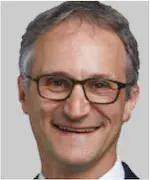Commentary
Article
Coding Q&A: Can urodynamics be performed and billed under an NP only?
Author(s):
"Nurse practitioners and physician assistants are considered qualified health care professionals and are able by license to supervise diagnostic tests and interpret based upon state laws," write Jonathan Rubenstein, MD, and Mark Painter.
I have a urodynamics coding question. The American Urological Association Policy and Advocacy Brief from December 1, 2015, states that urodynamics can be performed by nonphysician practitioners such as physician assistants, nurses, or medical technicians. However, billing for these services requires direct supervision, meaning the billing physician must be present in the office when that individual performs the urodynamics or the services can be billed under the individual practitioner’s National Provider Identification number. Can urodynamics be performed and billed under a nurse practitioner only and not the physician? (We do not bill “incident to” or “split billing.”)
Jonathan Rubenstein, MD

Urodynamics (using base CPT codes 51726-51729, with associated procedures if indicated and performed) have both a technical and professional component. The technical component is the performance of the test itself (for example, placing the catheter[s], running the machine, and creating printouts of the results). In contrast, the professional component is the professional interpretation of the test with a report. The technical component may be delegated by the billing provider to be performed by a nonphysician practitioner under direct supervision, where the supervising provider must be in the same office suite. The professional component (interpretation) can be performed at the same time or at a different time and interpreted by the same or a different practitioner. If the technical and professional components are
Mark Painter

performed at the same time and date and by the same provider, the code(s) can be reported globally (1 bill, no modifiers needed); if the supervising and interpreting providers are not the same, the code(s) should be reported with the appropriate modifiers (-TC for the reporting of the technical component and -26 for the professional component) by the respective health care professionals.
Nurse practitioners and physician assistants are considered qualified health care professionals and are able by license to supervise diagnostic tests and interpret based upon state laws.
We just started offering the eCoin procedure, and I would like to know which CPT codes my physician would use to bill.
On January 1, 2024, CPT Category III codes 0816T (open insertion or replacement of integrated neurostimulation system for bladder dysfunction including electrode[s] [eg, array or leadless], and pulse generator or receiver, including analysis, programming, and imaging guidance, when performed, posterior tibial nerve; subcutaneous)and 0818T (revision or removal of integrated neurostimulation system for bladder dysfunction, including analysis, programming, and imaging, when performed, posterior tibial nerve; subcutaneous) became effective.
Before the effective date of these codes, physicians were left with reporting either an unlisted code or directed by some payers to 64590 (insertion or replacement of peripheral or gastric neurostimulator pulse generator or receiver, direct or inductive coupling)for insertion of a subcutaneously placed tibial nerve neurostimulator. With the release of these codes, the parenthetical descriptor of code 64590 was also changed which would prevent one from reporting 64590 when performing this tibial nerve procedure.
Once a new CPT code becomes effective, CPT rules and payer adoption of the new CPT code set as required by the Health Insurance Portability and Accountability Act dictate that one must report the most accurate, complete, and descriptive code for the service performed. Therefore, reporting codes 0816T or 0818T is the appropriate way to code for insertion of eCoin. The codes are inclusive, like those addressed above, and should be the only codes reported for physician services.
If the procedure is performed in a facility (Ambulatory Surgical Center or Hospital Outpatient Department), the facility can also report HCPCS code C1767 (generator, neurostimulator [implantable], nonrechargeable). This code is used to reimburse for the technology, time, rent, and personnel supplied by the facility and does not affect payment for physician services.
Send coding and reimbursement questions to Jonathan Rubenstein, MD, and Mark Painter c/o Urology Times®, at UTeditors@mjhlifesciences.com.
Questions of general interest will be chosen for publication. The information in this column is designed to be authoritative, and every effort has been made to ensure its accuracy at the time it was written. However, readers are encouraged to check with their individual carrier or private payers for updates and to confirm that this information conforms to their specific rules.

Clarifying coding for percutaneous nephrolithotomy procedures




